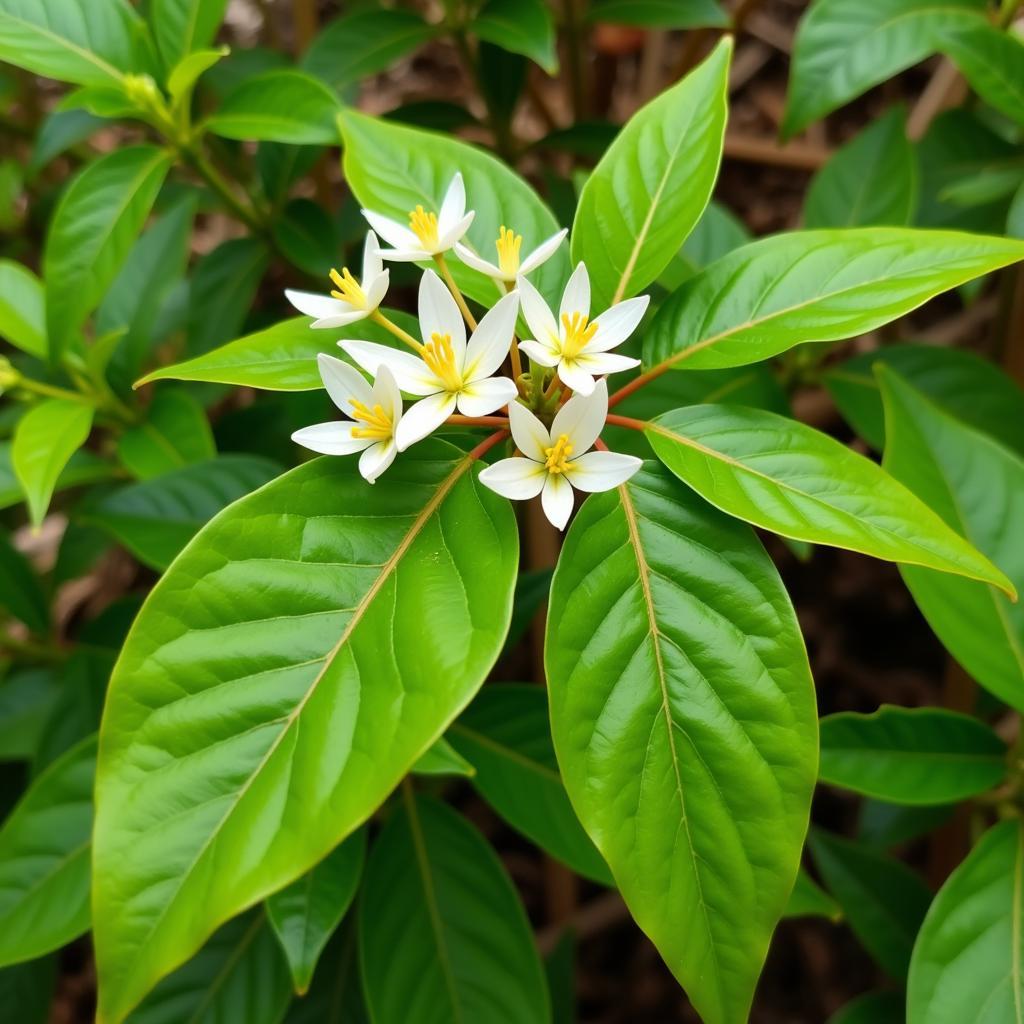Unveiling the Secrets of the African Khat Plant
The African Khat Plant, known scientifically as Catha edulis, holds a unique and often controversial place in the cultural tapestry of East Africa and the Arabian Peninsula. This evergreen shrub, with its glossy green leaves and delicate white flowers, has been both revered and reviled for centuries, its stimulating properties woven into the social fabric of diverse communities.
 African khat plant growing in the wild
African khat plant growing in the wild
A Plant of Paradox: Tradition and Controversy
Khat’s significance in African culture is undeniable. In countries like Ethiopia, Somalia, and Yemen, chewing khat leaves, often for hours on end, is a deeply ingrained social custom, akin to the coffee culture in other parts of the world. It’s an activity that transcends social strata, bringing together friends, colleagues, and families in a ritual of shared experience.
 Group of people chewing khat leaves in a social setting
Group of people chewing khat leaves in a social setting
However, the khat plant’s legacy is far from simple. Its use is often associated with a range of social and health concerns, sparking debates about its impact on individuals and communities. While proponents highlight its cultural value and perceived benefits, critics point to its potential for addiction and adverse health effects.
The Science Behind the Stimulation: Understanding Khat’s Effects
The stimulating effect of khat comes from a chemical compound called cathinone. When chewed, khat leaves release cathinone, which is then absorbed into the bloodstream. This substance acts as a stimulant, producing feelings of euphoria, alertness, and increased energy.
However, cathinone is also structurally similar to amphetamine, a potent stimulant known for its addictive properties. This similarity raises concerns about the potential for khat to be habit-forming, particularly with prolonged and excessive use.
Cultural Significance vs. Health Concerns: Navigating the Khat Debate
The debate surrounding khat use often centers around the balance between its cultural significance and its potential health risks. In many communities, khat is deeply woven into the social fabric, playing a role in rituals, ceremonies, and everyday social interactions.
Proponents of khat use argue that it fosters social bonding, facilitates communication, and plays a valuable role in cultural traditions. They often compare its moderate use to the consumption of coffee or tea, highlighting its perceived ability to enhance focus and productivity.
Conversely, critics express concerns about the plant’s potential to cause addiction and contribute to a range of health issues, including cardiovascular problems, insomnia, and mental health disorders. They point to cases of khat dependence and the social consequences associated with its excessive use.
Beyond the Chew: Exploring Alternative Perspectives on Khat
Despite the ongoing debate, there’s a growing movement to reframe the conversation around khat, moving beyond the polarized perspectives of “good” versus “bad.” Researchers, anthropologists, and community leaders are exploring alternative viewpoints, recognizing the complexities of khat use and advocating for nuanced approaches.
This includes promoting responsible use within cultural contexts, raising awareness about potential risks, and providing support for individuals struggling with khat dependence. It also involves exploring alternative uses for the khat plant, such as in traditional medicine or as a source of natural insecticides.
Conclusion: Recognizing the Complexity of the African Khat Plant
The African khat plant presents a fascinating case study in the intersection of culture, tradition, and public health. Its use is deeply entwined with the social and cultural identities of many communities, yet its potential for harm cannot be ignored.
Moving forward, it’s crucial to approach the khat conversation with sensitivity and a willingness to understand its multifaceted nature. By acknowledging its cultural significance while addressing its potential risks, we can strive for a balanced and informed perspective on this controversial yet culturally significant plant.
